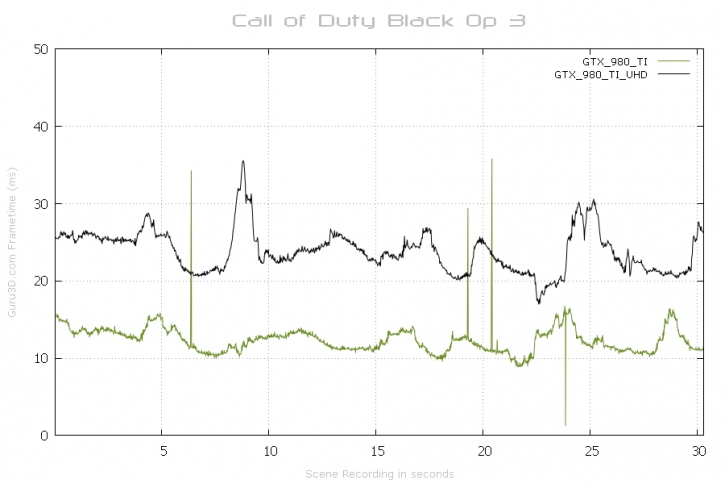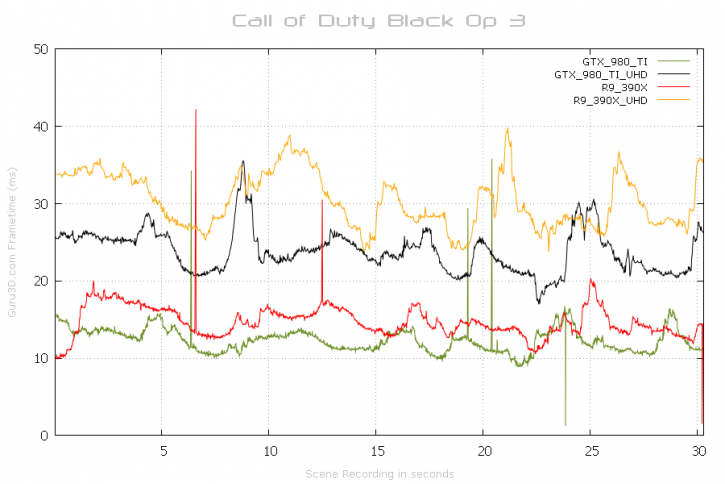FCAT Frametime Recording GeForce GTX 980 Ti & Radeon R9 390X
Frametime and latency performance
With a benchmark technology called FCAT on the following two pages, we will look into Frame Experience Analysis. Basically with the charts shown we are trying to show you graphics anomalies like stutters and glitches in a plotted chart. Lately there has been a new measurement introduced, latency measurements. Basically it is the opposite of FPS.
- FPS mostly measures performance, the number of frames rendered per passing second.
- Frametime AKA Frame Experience recordings mostly measures and exposes anomalies - here we look at how long it takes to render one frame. Measure that chronologically and you can see anomalies like peaks and dips in a plotted chart, indicating something could be off.
| Frame time in milliseconds |
FPS |
| 8.3 | 120 |
| 15 | 66 |
| 20 | 50 |
| 25 | 40 |
| 30 | 33 |
| 50 | 20 |
| 70 | 14 |
We have a detailed article (read here) on the new FCAT methodology used, and it also explains why we do not use FRAPS anymore. Frametime - Basically the time it takes to render one frame can be monitored and tagged with a number, this is latency. One frame can take say 17 ms. Higher latency can indicate a slow framerate, and weird latency spikes indicate a stutter, jitter, twitches; basically anomalies that are visible on your monitor.
What Do These Measurements Show?
Basically, what these measurements show are anomalies like small glitches and stutters that you can sometimes (and please do read that well, sometimes) see on screen. Below I'd like to run through a couple of titles with you. Bear in mind that Average FPS matters more than frametime measurements.
Frame Pacing / Frametime - Single GPU
Above a plotted frame-time results of the test run @ 2560x1440 performed with a single Radeon R9 390X (8GB) in 2560x1440 and then in Organge the card in ultra HD (higher latence) . There where two visible stutters with the card at WHQD,it happens. one or two of them really means nothing. The Radeon R9 390X is nice and smooth with our settings.
BTW for FCAT I need a DVI (Dual-link) output, hence I cannot use the Fury X or NANO here (otherwise I would have done so of course).
Above the GeForce GTX 980 Ti in green at 2560x1440. Then in black the card at Ultra HD. This test run lasts roughly 30 seconds. Overall this is darn smooth aside from two small stutters and one framedrop.
And now we combine the results. It is interesting to see that a € 439,95 Radeon R9 390X is keeping up nicely, but the card has a massive 8GB framebuffer of course (graphics memory). Both Nvidia and AMD are doing well in this title. There's very little frame variation, none really. Aside from an occasional hiccup. Latency and frame experience measurements wise, both brands have got their drivers up-to snuff from what we can tell.




